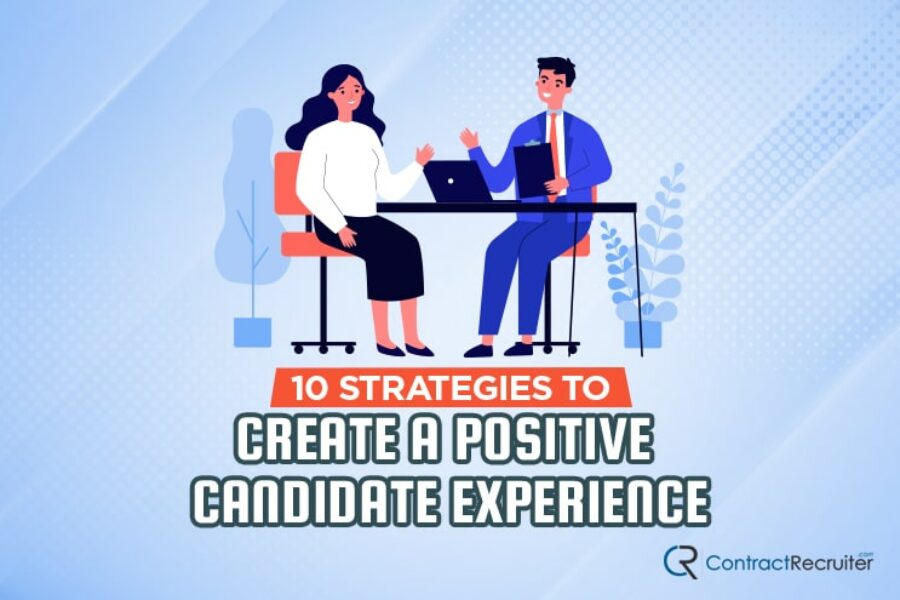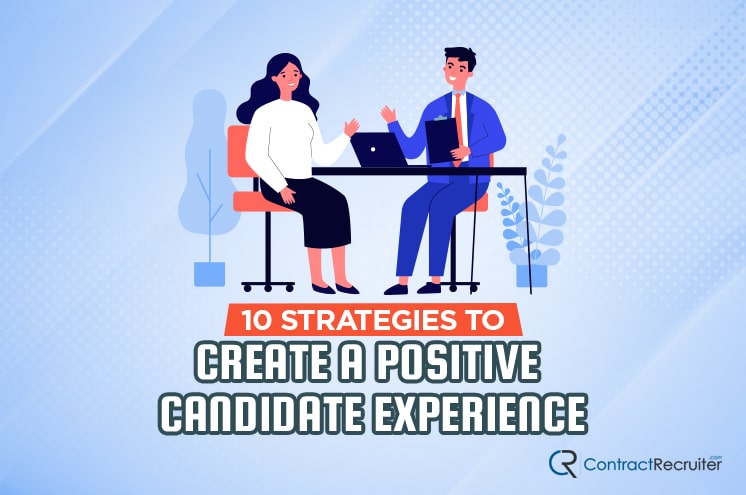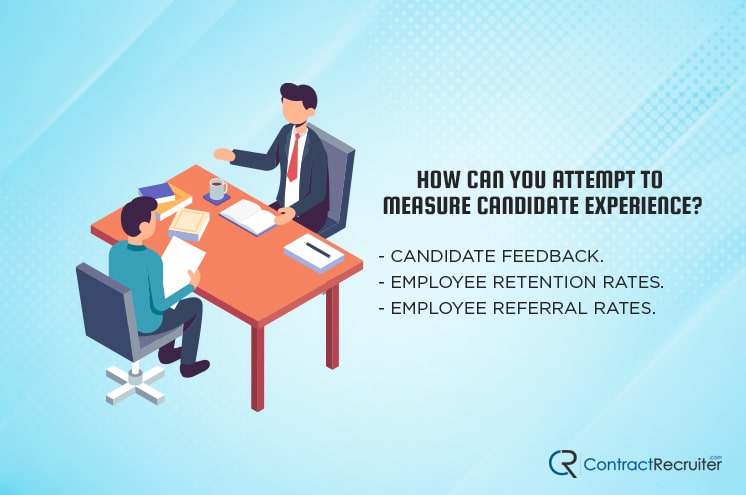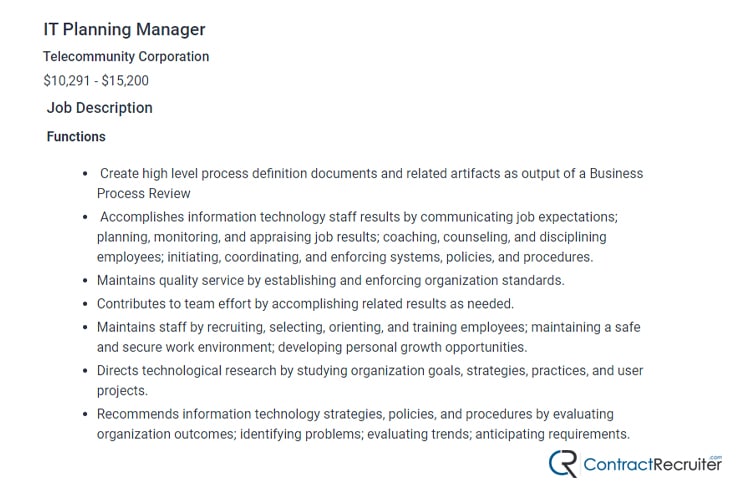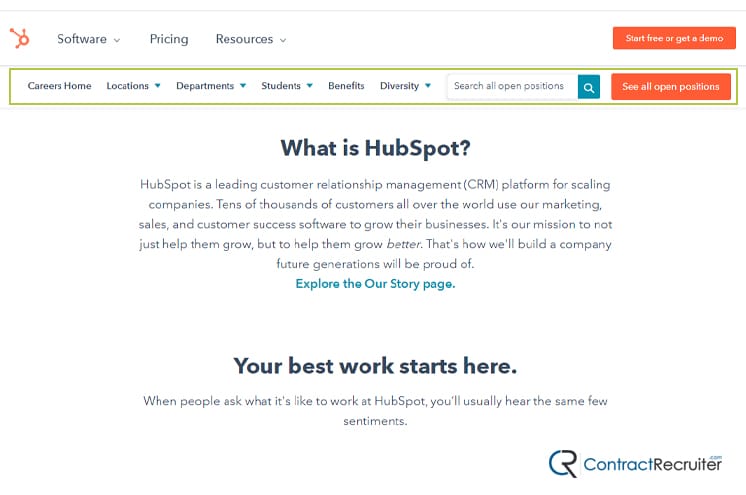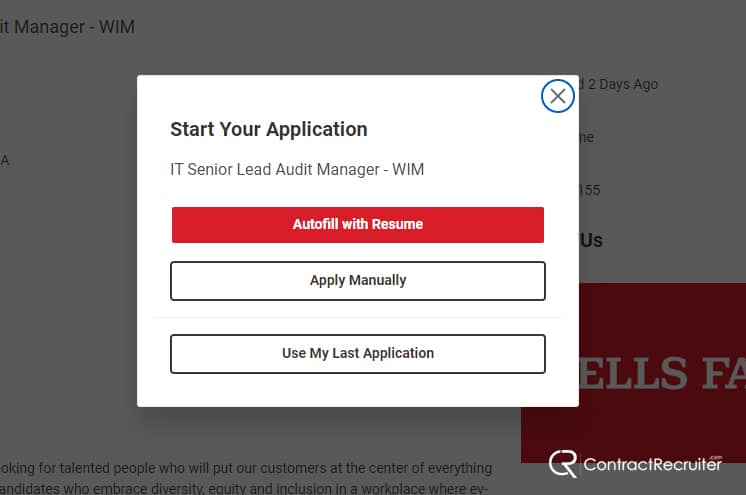A significant part of your hiring process is the candidate experience.
What is the candidate experience? Put simply, it’s the whole array of experiences and interactions between your company and any given candidate, from the time they see your job ad to the time they are either hired or not.
It’s essential to note that the candidate experience is not limited solely to the candidates you hire. The people you don’t hire are also important! If your first choice doesn’t work out, you don’t want to have burned a bridge with your second choice, and if you need more hires down the road, keeping a pool of warm, positive leads can be highly beneficial.
Thus, the candidate experience is all about providing a positive series of interactions from moment one until the candidate voluntarily ceases interactions with your brand. The candidate experience encompasses:
- The job search experience; where your job is advertised, how it is advertised, and how job seekers can interact with it.
- The application experience, including any unusual instructions or demanding requirements.
- The hiring process, from pre-interview screening, to scheduling, to the interview itself.
- The post-interview process, including communication and the length of time it takes to make a determination.
- The onboarding process, which we have already covered in detail.
Remember, as well, that the job market is currently heavily weighted in favor of the candidates. Many candidates, particularly those with essential skillsets, are in high demand. They often have multiple offers and have their pick of places to work. The quality of their candidate experience will be one of the influencing factors that can lead them to choose – or eliminate – your company.
According to a study by IBM, candidates are 38% more likely to accept a job offer when they’ve had a positive candidate experience.
Remember, as well, that the candidate experience you convey has repercussions beyond your existing candidate pool. Candidates – especially those in technical or advanced fields – are generally part of the same social circles.
“According to a CareerArc survey, nearly 60% of candidates surveyed said they had a poor candidate experience, and 72% of those candidates shared that experience online or with someone directly.” – Forbes.
They post on Glassdoor, they post on Reddit, and they post on niche forums and social media. One candidate having a negative experience can suppress other good candidates from even applying.
Can You Measure the Candidate Experience?
Unfortunately, the candidate experience can be difficult to track for two reasons. The first is because it’s not a fixed and measurable definition of action and interaction. What makes an interaction positive? The answer will vary from person to person and situation to situation.
The second reason is that at least some of what goes into a positive candidate experience is personal and requires self-reported feedback. There are relatively few impartial, objective measures of candidate experience available.
How can you attempt to measure candidate experience?
- Candidate feedback. Surveys from candidates, both those you hire and those you do not, can help streamline, optimize, remove roadblocks, and improve your hiring process.
- Employee retention rates. Candidates with a positive introduction to your company are more likely to make friends, join teams, and stick around longer than those who feel disengaged or negative about their experiences.
- Employee referral rates. Employees will refer others to a company for two reasons: because they like the company and want their friends to work with them or because there’s a monetary bonus for doing so. You can measure the former in the absence of the latter.
The key is not to benchmark your candidate experience against other businesses, though you can do some soft comparisons and look for ideas to optimize your own. The goal is to improve your candidate experience compared to your own experience in the past. Thus, using your own data as a benchmark is plenty.
How, then, can you improve your candidate experience? Here are ten options you can investigate and, if applicable to your situation, pursue.
1: Provide Clear and Effective Job Descriptions
In your job ad, your job description is often the first part of the candidate experience. Through that description, a candidate gets their first impression of your company as an employer and of the department, team, role, and management style they will be part of.
A good job description is clear and concise, and the job ad should discuss culture, expectations, salary range, growth opportunities, and more. The ad should also use inclusive language, minimize unnecessary “requirements,” and be accurate about expectations. Remember, it’s less about what you want in a candidate and more about what a candidate gets from you.
2: Guarantee Active Communication
Nothing is worse for a candidate experience than a lack of communication. Whether it’s little or no feedback about their application when they send it in, too long delays between responses or communication when scheduling skill tests or interviews, or no feedback after an interview and a lack of follow-up if you pass them over, the candidate will see you less and less favorably with every passing day.
Communication also extends to expectations and transparency in the hiring process. Will the candidate be required to take a skills assessment, personality test, or even an IQ test? Will they have to progress through two or more rounds of interviews? What is the timing like, and how long will each stage take? Clarity is required, and being up-front with your timing and expectations is necessary for a modern candidate experience.
3: Make Information Candidates Want Easily Accessible
Your candidates care about more than just the list of job duties and the salary range. They care about your company atmosphere, dedication to inclusivity and diversity, and much more.
It’s, obviously, impossible to include all of this information in a well-formed job ad, so instead, build a robust careers portal on your website where users can check all of this information.
A great example of this is HubSpot. Their careers page has a wealth of information about nearly everything involved in working for their company, from their locations, to their benefits, to their diversity reports.
This careers page is a living document and should be continually improved and maintained to keep its information up to date, cover topics your candidates want to know about, and maintain a positive presence even when you’re not actively hiring. It is, after all, one of your most essential resources in the hiring process.
4: Minimize and Streamline the Application Process
In a viral tweet, this user sarcastically decries the time required to apply to jobs, particularly using ATSs that accept an uploaded resume, and then asks the applicant to add all relevant information to forms manually even if it’s all present in the resume. Taleo, for example, is a big offender in this space.
Though tongue-in-cheek, the complaint is genuine. As much as 60% of job seekers abandon applications part of the way through when they’re asked to fill out complex forms or put in a lot of effort before even sending in a basic application. It’s a massive burden on the candidate with zero guarantees of so much as an email acknowledging it.
This is even worse when you’re attempting to recruit passive candidates or candidates for highly skilled positions where their experience should speak for itself. It becomes insulting and a waste of time. Take the time to streamline and remove the burden from candidates when you don’t absolutely need the information they fill out.
5: Use Modern, Relevant Interview Techniques
Your interview is often one of the first times your candidates meet and talk to anyone on your staff. It’s their first impression of how organized, effective, and inclusive your company is.
Many interview techniques, like group interviews and aggressive panel interviews, are designed to be antagonistic towards candidates. They work, in a limited capacity, when the job market is company-driven. In times like these, where the market is candidate-driven, an aggressive or inefficient interview process becomes a gigantic red flag.
It’s also worthwhile to use an interview scorecard to help guarantee impartial, unbiased decision-making in your interview. Removing bias from hiring is extremely important for reasons beyond the candidate experience, as well.
6: Ask and Consider Feedback
Feedback is a core part of improving your candidate experience. Each step of the way, consider asking for a bit of feedback on that part of the process. It can be as simple as a 2-3 question survey as part of the job application or a simple Q&A during an interview, but it should be relevant to the process and the experience. It should also be clear that the feedback is not part of the candidate consideration process and that even negative feedback will not affect the candidate’s chances of being hired.
When you receive feedback, analyze it and see how broadly it applies. Sometimes, negative feedback has more to do with a unique candidate situation than with your experience as a whole. Other times, it’s a fundamental issue that requires significant change to address. Take action as appropriate.
7: Keep in Contact with Your Best Candidates
Your candidate pool does not need to be rebuilt every time you need to hire for an open role. If you keep in communication with the candidates who make it at least to the interview stage, you can keep them “warm” and available to interview for another role or in the event of your first choice falling through.
One of the worst things you can do to a candidate is ghost them. Whether it’s keeping them on a mailing list, reaching out to them occasionally, or just periodically reminding them that you have their information on file for future consideration, this level of contact is very valuable for hiring for future positions with a short turnaround time.
8: Use Knowledgeable Hiring Staff
The hiring process isn’t one-directional. Your candidates are interviewing you as much as you are interviewing them. They will have questions about your company in general and about the role they’ll be working if they’re hired.
One massive red flag for many candidates is being interviewed by a hiring manager or a recruiter who doesn’t know anything about the role they’re filling. At the very least, your hiring process should include at least one meeting with a relevant manager for the team the candidate would be part of, so they can ask relevant questions.
When working with a third-party recruiting firm or solitary recruiter, you want to hire someone who specializes in your industry and can speak knowledgeably about it to help convey details and reassure candidates. A recruiter lying about a position is a common and devastating complaint about the candidate experience.
9: Discuss Salary
Candidates often have a salary range in mind, whether they want something better than their current range or they need a specific salary to be able to live in the area where they’d need to move to work for you.
One of the most frustrating things for many candidates is to progress through the interview stage, only to receive an offer that is laughably lower than their minimum. Companies often try to lowball candidates through secrecy, and it’s a strategy that no longer works, particularly in candidate-driven job markets.
You may choose not to post a salary range publicly in your job ads, but you should be willing to discuss it very early in the hiring process. If nothing else, it respects the time and talent of your candidates.
10: Continually Improve
There’s no such thing as one singular “good” candidate experience. Since the candidate experience varies from person to person, from time to time, from role to role, and from company to company, the only thing you can do is always strive to be better than the last time.
Do you or your company have any questions about the candidate experience or how you can create a more positive one? Was there anything we mentioned in today’s article that you would like a little more clarification on? If yes to either of these questions, please feel free to drop a comment down below, and we’ll get a conversation started! We’d be more than happy to assist you in improving your candidate experience however we can!

